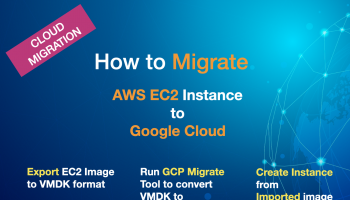Cloud Computing Trends for 2021.
Cloud computing kept the business and remote workforces connected during this ongoing coronavirus pandemic. As we move into 2021, every organization would eventually adopt cloud models and existing cloud business would look at ways to streamline their processes for better business continuity.
Let’s look at the top cloud computing trends that organizations need to watch out for.
Hybrid and Multicloud
A hybrid and Multicloud platform provides a cloud computing environment that helps organizations to deploy and manage their applications on on-prem, private cloud or across multi-cloud providers in a unified and consistent way.
A Multicloud environment provides enterprises to modernize their applications and adopt cloud services from multiple cloud vendors based on their business requirements and avoid vendor lock-in.
Organizations which runs their solutions on-premises, can leverage their existing infrastructure and modernize their applications and build regulatory and compliant solutions where data doesn’t leave the organization’s geographic boundaries. These organizations can scale their on-prem infrastructure to cloud and also leverage cloud services to run non-sensitive computation tasks.
For instance, Hybrid and Multicloud platforms like Google Anthos, provides a unified approach to streamline on-premises and multi cloud environments that includes
- A consistent development and deployment experience
- Unified operations, monitoring and SLA management
- Consistent compliance, security and policy adherence
- Portability through the use of cloud-native applications/containers
You would see lot of developments in this space – from infrastructure modernization, integration, tooling and skilling for hybrid and multi-cloud adoption.
Cloud on the Edge
In a connected world and with 5G gaining momentum, we would see new class of cloud-native applications that would require data and compute to be located closer to end-users to provide real-time, ultra-low latency and immersive experience.
The next generation applications would drive new set of requirements like near real-time decision making, low latency streaming, gaming and virtual experience and collective intelligence. With adoption of Internet of Things, every object in the world would have the potential to connect to the Internet and provide their data so as to derive actionable insights on its own or through other connected objects. To realize this vision for Internet of Things, Edge computing would play a very critical role.
Industries need to be agile and prepared for transformation. For instance virtual mall shopping, trying and buying stuffs can provide the same real-like experience in future.
Cloud providers would need to extend the hybrid and multi-cloud model on the edge to provides computing and central management of edge clouds.
Serverless
Serverless technology removes the overhead of managing the cloud infrastructure and allow organizations to focus on executing business functions.
Lot of organizations have already embarked on the serverless journey and this would grow exponentially for new class of applications and for distributed services orchestration. Serverless technology will be a boom for start-ups and small scale business to quickly try out and scale ideas/products without worrying about constant cloud costs.
You might see lot of standardization evolve in this arena, which allows to run serverless technology is a vendor neutral way across hybrid and multi-cloud providers.
Intelligent Cloud Management and Cloud Optimization
As all workloads would eventually move to cloud and hybrid cloud models, intelligent cloud management solutions will evolve which would guide customers to use could services effectively and optimize their spends.
Based on the usage data generated by the cloud and workloads, recommendations would be provided to downgrade or upscale computing resources. For instance, a database instance might have been provisioned with default IOPS and based on utilization, only 30% IOPS is actually utilized. The cloud optimization solution would provide recommendation to downgrade the IOPS numbers by utilizing every bit of usage data to provide optimisation. Similarly if development environments are not being utilized on weekends and only available for business hours, based on actual usage utilization, recommendation should be provided to turn off those computing resources. Similarly, recommendation can be provided to move towards serverless where constant workload is not required. There can be many opportunities where an AI engine can recommend upgrade/downgrade or even migration of services based on actual usage scenarios. There is ample opportunity to use the actual cloud data and provide optimisations across cloud services.
We would also see lot of third party vendor solutions come up that would help customers choose and provision the right cloud services and optimise spends.
Summary
To summarize, various innovations would happen in cloud computing to help organizations modernize existing applications and build new cloud native solutions that can seamlessly run anywhere – be it on-prem, multi-clouds or on the edge.
The article was featured in Jan 2021 release of Industrial Automation magazine – https://www.industrialautomationindia.in/articleitm/11284/Cloud-Computing-Trends-for-2021/articles


